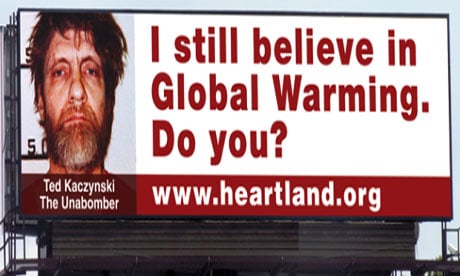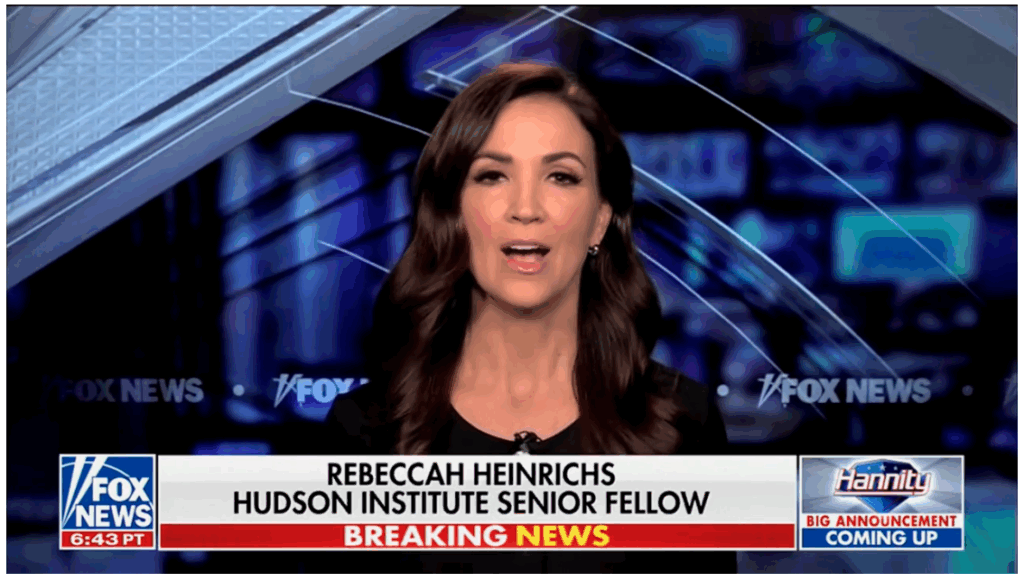The Heartland Institute’s jaw-droppingly ill-advised, and now withdrawn billboard campaign—pictured here–has drawn a huge volume of denunciations in the last week. There’s not much more to say substantively about the campaign, or the fallout from it, which has included a number of Heartland funders heading for the hills.
But it is fascinating to try to understand why the Heartland Institute may have gone to this extreme. The psychological phenomenon that I see lurking behind these ads is a critical one to understand–black and white, “in group/out group” thinking.
This is something that David Ropeik has already written on very observantly. In trying to explain and justify its linking of global warming with people like Ted Kaczynski and Charles Manson, Ropeik notes, here are some of the things Heartland has said–and the words speak volumes:
The most prominent advocates of global warming aren’t scientists. They are murderers, tyrants, and madmen.
…what these murderers and madmen have said differs very little from what spokespersons for the United Nations, journalists for the ‘mainstream’ media, and liberal politicians say about global warming.
What is going on here, psychologically, is something called “splitting.” The Heartland Institute is ignoring basic intellectual distinctions and all sense of nuance, and dividing the world up into black and white extremes.
Once you do this, it becomes much easier to group one’s intellectual opponents together with “murderers, tyrants, and madmen.”
Why did Heartland fall to splitting the world up so dramatically into black hats and white hats? Well, first of all, the group has arguably always been pretty extreme. See here, for instance.
However, even above that, the Heartland Institute seems to have felt embattled, due to the dramatic scrutiny of its funding in recent months. We have this on the word of the climate skeptic blogger Anthony Watts himself, who commented that Heartland was experiencing “battle fatigue.”
The institute also thinks that it has been subject to unfair tactics by its opponents:
Of course, not all global warming alarmists are murderers or tyrants. But the Climategate scandal and the more recent Fakegate scandal revealed that the leaders of the global warming movement are willing to break the law and the rules of ethics to shut down scientific debate and implement their left-wing agendas.
In other words, Heartland believes it is facing down devious wrongdoers, and this may justify (in the Institute’s mind, I stress) fighting fire with fire.
Finally, and critically, the Heartland Institute’s rhetoric—note in particular the word “tyrants”–represents a highly dialed up expression of the moral foundation of liberty/oppression, as explained by moral psychologist Jonathan Haidt (my unpacking here). In conservatives, this moral foundation leads one to want to throw off oppression and tyranny—its motto is “don’t tread on me.” And on the right, one views this oppression as coming from the left and the state, e.g., statism and communism. (Never mind the total political irrelevance of communism in the U.S. context.)
So it is no wonder that the Heartland campaign focuses on violent left-wingers, like Kaczynski, and that a future billboard was supposedly going to feature Fidel Castro. Heartland is rearticulating, in an extreme form, a theme that has always been present in the conservative campaign against climate science: The idea that this is a left-wing statist takeover in the making, in which phony science is used to quash liberty and economic prosperity and support tyranny.
Now, obviously, all of this is a world apart from reality. And even more obviously, these basic impulses–splitting, viewing the political left as tyrannical–exist to varying degrees on the right and in the Tea Party.
But what the Heartland campaign reveals is what they look like if taken to a sufficient extreme.
Subscribe to our newsletter
Stay up to date with DeSmog news and alerts






